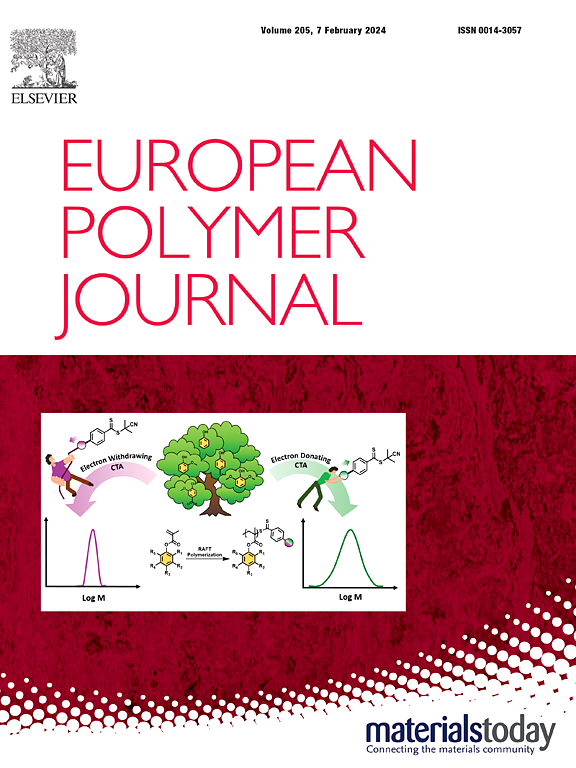Highly pure curing agent from tomato waste for bio-based anti-corrosion epoxy coatings
IF 5.8
2区 化学
Q1 POLYMER SCIENCE
引用次数: 0
Abstract
Tomato peels have been proposed as a promising biowaste for producing bio-derived anti-corrosion polymer coatings potentially more sustainable than traditional petrol-based ones. Nonetheless, there is no proof that the cutin monomer, i.e. 10,16-dihydroxy hexadecanoic acid (10,16-diHHDA) largely found in tomato peel, can be used as a curing agent, due to a lack of sufficiently pure samples of this fatty acid. In this work, the cutin monomer was firstly successfully isolated by up-cycling tomato-dried peels with a purity averaging 92 % and a 67 % recovery rate. 10,16-diHHDA was then used as a trifunctional reactive component to develop fully bio-based epoxy coatings formulated with three different epoxidized precursors. Using a phloroglucinol epoxidized precursor, an increase in the ratio between epoxy groups and hydrogen-active nucleophiles increased the glass transition temperature, up to an average of 104 °C, along with enhanced hardness and adhesion to steel and aluminum alloy surfaces. Additionally, all the cutin-derived coatings exhibited higher hydrophobicity than a reference bisphenol-A-containing coating. The most promising bio-based resin formulations were finally used to coat carbon steel samples and the protection ability against corrosion in a 3.5 wt% NaCl solution was assessed through a multi-step electrochemical testing protocol to investigate continuum phenomena at both medium|coating and coating|metal interfaces. As a result, two resin compositions (namely PC_4:1_5 and PC_5:1_3, differing for the amounts of the cutin monomer and catalyst) were identified as the most protective coatings in terms of both instant and long-term performance. Pore resistance, initially ≥ 100 GΩ cm2 on average, double that of the reference petrol-based coating, decreased to a still well-satisfactory 1 GΩ cm2 value even after one week of accelerated aging test. Within the same time frame (i.e., 7 times longer than the recommended period by the ASTM industrial standard test) the water uptake was finally set at <5 % values without any delamination.

求助全文
约1分钟内获得全文
求助全文
来源期刊

European Polymer Journal
化学-高分子科学
CiteScore
9.90
自引率
10.00%
发文量
691
审稿时长
23 days
期刊介绍:
European Polymer Journal is dedicated to publishing work on fundamental and applied polymer chemistry and macromolecular materials. The journal covers all aspects of polymer synthesis, including polymerization mechanisms and chemical functional transformations, with a focus on novel polymers and the relationships between molecular structure and polymer properties. In addition, we welcome submissions on bio-based or renewable polymers, stimuli-responsive systems and polymer bio-hybrids. European Polymer Journal also publishes research on the biomedical application of polymers, including drug delivery and regenerative medicine. The main scope is covered but not limited to the following core research areas:
Polymer synthesis and functionalization
• Novel synthetic routes for polymerization, functional modification, controlled/living polymerization and precision polymers.
Stimuli-responsive polymers
• Including shape memory and self-healing polymers.
Supramolecular polymers and self-assembly
• Molecular recognition and higher order polymer structures.
Renewable and sustainable polymers
• Bio-based, biodegradable and anti-microbial polymers and polymeric bio-nanocomposites.
Polymers at interfaces and surfaces
• Chemistry and engineering of surfaces with biological relevance, including patterning, antifouling polymers and polymers for membrane applications.
Biomedical applications and nanomedicine
• Polymers for regenerative medicine, drug delivery molecular release and gene therapy
The scope of European Polymer Journal no longer includes Polymer Physics.
 求助内容:
求助内容: 应助结果提醒方式:
应助结果提醒方式:


